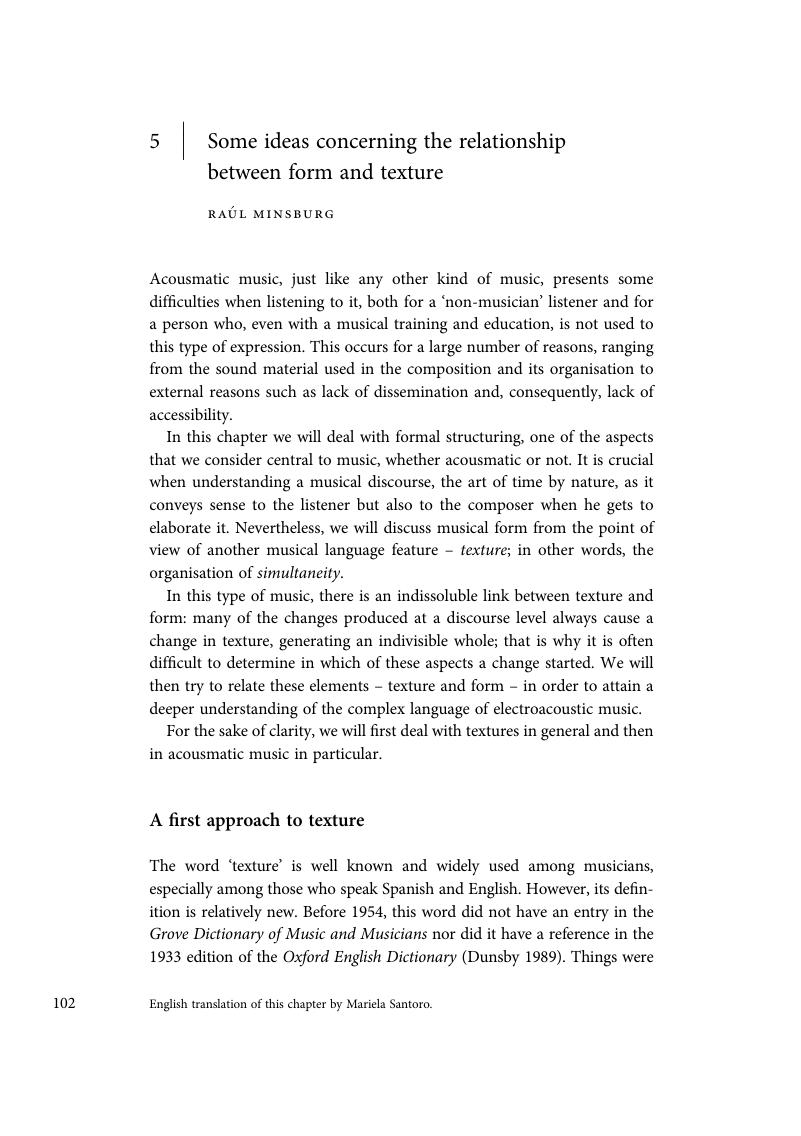Book contents
- Expanding the Horizon of Electroacoustic Music Analysis
- Expanding the Horizon of Electroacoustic Music Analysis
- Copyright page
- Contents
- Figures
- Contributors
- Part I Setting the scene
- Part II Ideas and challenges
- 2 Listening and meaning: how a model of mental layers informs electroacoustic music analysis
- 3 Forming form
- 4 Interactive and generative music: a quagmire for the musical analyst
- 5 Some ideas concerning the relationship between form and texture
- Part III Harnessing new forces
- Part IV Analyses of key works
- Index
- References
5 - Some ideas concerning the relationship between form and texture
from Part II - Ideas and challenges
Published online by Cambridge University Press: 05 April 2016
- Expanding the Horizon of Electroacoustic Music Analysis
- Expanding the Horizon of Electroacoustic Music Analysis
- Copyright page
- Contents
- Figures
- Contributors
- Part I Setting the scene
- Part II Ideas and challenges
- 2 Listening and meaning: how a model of mental layers informs electroacoustic music analysis
- 3 Forming form
- 4 Interactive and generative music: a quagmire for the musical analyst
- 5 Some ideas concerning the relationship between form and texture
- Part III Harnessing new forces
- Part IV Analyses of key works
- Index
- References
Summary

- Type
- Chapter
- Information
- Expanding the Horizon of Electroacoustic Music Analysis , pp. 102 - 120Publisher: Cambridge University PressPrint publication year: 2016



